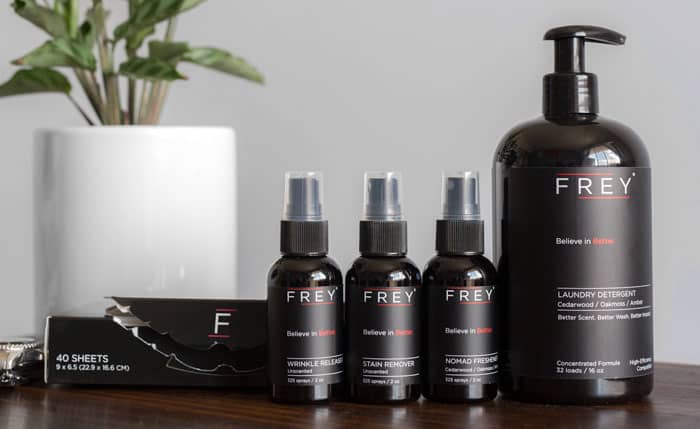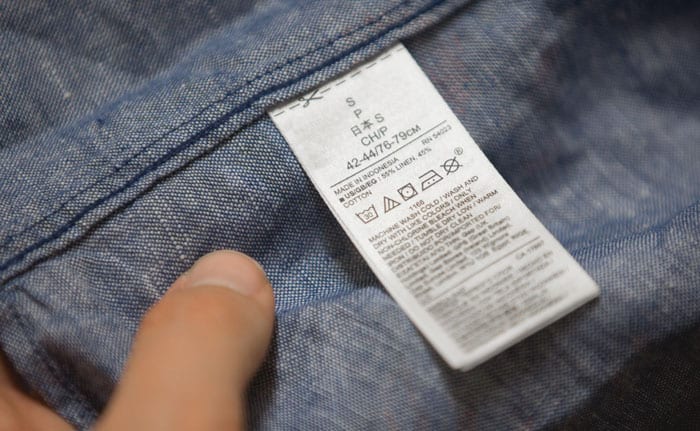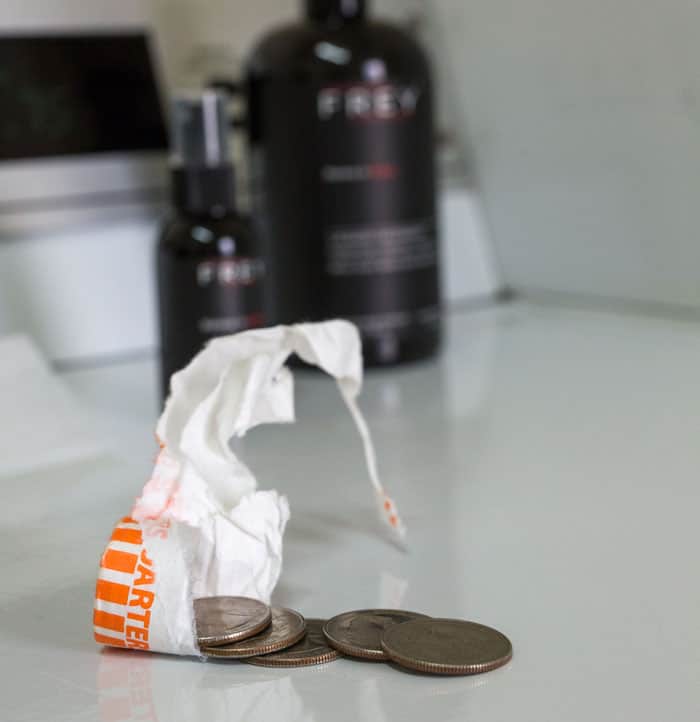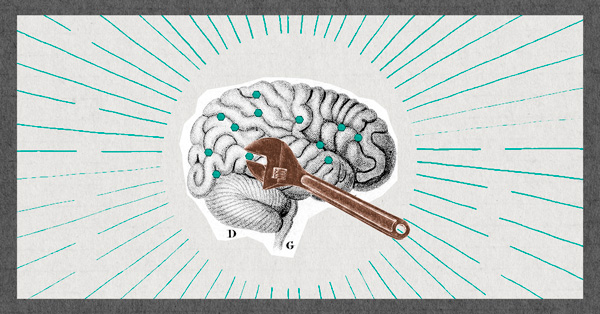Historically, my laundry routine has been a riot of bad habits: Once a month I do three-to-four rapid-fire loads in a single manic session. It usually blows a full Sunday. Because I’m in a hurry, I blend whites and colors.
I nearly always use hot water because it gets stinky things ‘cleaner,’ right?
Because I’m busy, guys, I empty the dryer well after the cycle is over.
I never pretreat (I prefer the prayer method of stain-removal).
If you’re shrugging your shoulders because this laundry routine sounds normal, know this: You’re throwing away a lot of money – and time – you could save by reforming your laundry game with a few simple and painless changes.
Are You Ready For A More Intentional Laundry Process?
Thanks to Primer, I’ve since learned the basics of good laundry care: separate colors, don’t overfill, be careful with bleach.
But if you care about the clothes you pay good money for and how long they last, there’s a lot more to learn.
When it comes to laundry a lot of guys suffer from what psychologists call the Dunning-Kruger Effect: you don’t know how much you don’t know.
So we’ve done a deep dive in to the science of laundry to compile a bad-habits-busting list of do’s and don’ts to help make your laundry routine more intentional.
The goal: work smarter, look better, extend the life of your clothes, and feel confident you’re doing laundry right …instead of just getting it done.
1. Stop Using Hot Water For Every Load
Are you a landscaper? Or a zookeeper? Or a soldier? Do you come home from work every day with deeply ingrained stains in your clothes?
Unless the answer to these questions is yes, you need to stop using hot water in your regular, workaday laundry routine.
Andrew, Primer’s founder and editor, gets a lot of emails from readers about how some of their affordable clothing doesn’t last as long as it should. Chatting with those readers almost always reveals the problem of over-laundering.
Affordable clothing brands are most vulnerable to hot water: they will pill, shrink, fade, and degrade far faster than if you use cold water.
“Should affordable clothing brands be able to withstand hot water and a hot dryer?” Andrew says, “Maybe, but the reality is they can’t. The good news is, proper laundry settings will allow even a $25 shirt to outlast trends, personal style, or weight change that will ultimately cause it to be donated to Goodwill.”
Hot water should be used for whites, towels, and landscaping stains only (but not together!).
Anything that isn’t all white (like undershirts or towels) should be washed on cold. Similarly, anything you don’t want to shrink should be in cold water.
There’s another reason not to use hot water: many modern detergents are designed to chemically eliminate stains and dirt in cold water. Not only is hot water damaging to your clothes – it’s unnecessary.
2. You’re Using Too Much Detergent
We looked at the detergent and liquid fabric softener caps for five major brands. The caps (and one scoop) all had five hash marks, labeled one through five.
Here’s the strange thing: The instructions on the back of each brand’s bottle – in very small text and diagrams – only included guidance for using three of the five hash marks (1 for medium loads, 3 for large loads, 5 for full loads).
So why are there two extra hash marks?
Our contention: to encourage detergent overuse. It works like this: if there were just three hash marks, how much detergent you use is pretty straightforward. Additional marks, however, create just enough ambiguity to transform a simple decision (use a little detergent, a medium amount, or a lot) into a more complicated one. “Hmm, this does seem like a large, dirty load…🤔”
Major laundry brands understand human behavior, and it’s natural for you to look at your load of laundry and bump up the amount of detergent to the next hash mark.
The thing is, more detergent doesn’t equal cleaner clothes, and unless your large load is extra dirty, the medium dose of detergent is plenty to clean your clothes – a fact detergent brands have litte interest in promoting.
3. Stop Nuking Your Clothes
Never dry your clothes on high heat. Why? Because the science is in: numerous studies have shown high heat wrecks your clothes. But you don’t need PhDs to tell you drying on high heat is terrible for your duds.
If you’ve ever emptied your dryer’s lint screen and found a colorful melange of white, blue, and red than you’ve experienced the First Law Of Laundry Thermodynamics: cotton fabric can neither be created nor destroyed, simply transferred in to new form.
In layman’s terms: all that lint had to come from somewhere – i.e., your clothes.
Lint is the product of micro-tears in fabric and high heat causes clothing to tear more easily; it also causes cotton and wool fabrics to shrink and lose their shape.
Affordable clothing is also vulnerable to rapid fading because inexpensive dyes are leached out more quickly with high heat.
In general, use your dryer’s medium or low heat setting. It’ll get the job done and prevent costly damage. Throw in a dryer sheet to add scent (which also extends the clean-life of a garment) and cut static electricity.
When To Use High Heat
High heat is recommended for sheets and towels. Otherwise, steer clear.
Don’t Overload
You might be thinking, “but a lower heat means my clothes will never get dry,” If this is the case, you’re likely overloading your dryer.
Cut load sizes, cut heat, save your clothing.
4. You’re Taking Clothes Out Of The Dryer Too Late
There were times in my laundromat days when I would return to find my dry clothes piled in a basket, stone cold, because I’d blown off my timer and someone else needed the machine. It was embarrassing, to say the least.
Turns out, that’s also a huge waste of time and effort.
Leaving laundry sitting in the dryer after it stops results in more work on the backend when you have to iron or steam out wrinkles (though if your duds require steaming we recommend the PureSteam Portable Fabric Steamer, reviewed here).
Here’s the fix: set your timer to 5 minutes before the dryer finishes and pull shirts and pants out immediately, while they’re still warm. Wrinkles can be wiped away or will disappear after an item is hung. Every millisecond the clothes are left to sit in the dryer wrinkles are more likely to require a steamer or iron.
It’s legit everyday magic – wipe away wrinkles and save time by being punctual.
5. Do You Know Where Your Care Tag Is Located?
There’s a secret care tag on the inside of most shirts and sweaters – do you know where yours are?
Common locations for shirts include the lower side hem. For pants, they’re often found near the seat. You need to locate and decode them because, in many cases, they hold the key to extending a garment’s lifespan.
Once you’ve found it, use Primer’s laundry symbol decoder graphic to unravel the tag’s mysteries.
The rule of thumb with garment care tags? The more expensive an item, the more specific it’s care is likely to be. But don’t get complacent with affordable items: if an inexpensive piece of clothing contains more exotic materials (like synthetics), it may require more upmarket care.
6. You’re Not Washing Your Sheets Enough
You shed about 30,000 to 40,000 skin cells every hour; in a given day, you lose about a million.
This is totally, 100% normal. Your skin sheds and replenishes itself continuously throughout your life. It only becomes a problem if you neglect to wash where many, many millions of them eventually end up: your sheets.
Sheets should be washed weekly, no exceptions. If weekly washing feels like a reach, you should have two sets.
If the graveyard of skin cells and a funky smelling room that only your guests can smell isn’t enough to convince you, consider this: Not changing sheets enough can contribute to bacne due to the buildup of oils and dirt. If you suffer from facial acne, experiment with changing your pillowcase more often.
7. Use Behavioral Hacks To Improve Your Laundry Routine
Ever said something like, “Well I can’t get to the gym because I left my shorts at…?”
It’s amazing how the tiniest obstacle can derail a worthy objective, and the same is true with laundry. If you don’t have detergent, or quarters for the machine that can be enough of an excuse not to get it done.
The solution: outsmart your brain when it comes to laundry.
If you use a laundromat or have machines in your apartment building, swing by the bank and pick up at least $50 in quarters. This will give you 5 rolls of laundry-busting change so you never have the excuse, “well, I don’t have enough quarters.”
Another tip: pick up a sturdy laundry basket (or two – one for dirties and one for clean/to-be-folded) that you really like.
Making a few preparations will ensure those superficial excuses don’t hold up, and encourage a more regular laundry routine.
8. Treat Stains The Right Way
Ever heard the phrase, “pretreat stains?” What does it mean? If you’re like most guys we asked, you probably think it means applying stain remover right before laundering an item.
Think again.
The minute you get a stain the clock starts ticking. Pretreating stains is actually more like critical first aid – it begins immediately. Luckily, there’s an initial set of commonsense steps you should take for most stains:
- Remove solid pieces
- Wipe with a napkin, then dab and absorb as much liquid as possible with a paper towel
- Douse the stain in cold water
After this initial treatment you should identify what type of stain it is and adjust your treatment accordingly. Protein-based stains (like blood) require a different approach than french fry grease. The blog Mama’s Laundry Talk has strategies broken down by stain type.
What Are Your Laundry Pro Tips? Share Them In The Comments!

The FREY laundry kit takes better care of your clothing – and smells pretty damn good too. Save 20% with PMAG20.
Advertisement
FREY Detergent Makes Your Laundry More Intentional
When you pick up a mainstream detergent brand it’s worth asking, “What am I really getting?” The answer may surprise you.
Detergent brands push products that are heavy on industrial chemicals, like phosphates, which are harsh on clothes and incredibly toxic for freshwater reserves and wildlife.
Adding insult to injury, many detergents use fillers like water and salts (“sodium sulfate” on the label) to add volume to the bottle. And most haven’t updated their often-overpowering scents in years.
We’re excited to partner with FREY to underwrite our laundry guide because their whole business is built around disrupting an industry that’s grown used to such tactics.
FREY detergent is blended with high quality natural ingredients, surfactants, and essential oils: FREY detergent utilizes a proprietary blend of enzymes and environmentally-friendly surfactants that is specially formulated without the harsh chemicals most detergent brands use, which helps take care of your clothing instead of slowly destroying it.
Pump dispensers prevent overuse: FREY doesn’t bottle their products with the traditional cap and provides clear instructions for how much to use. In testing, we were surprised at how little detergent – just 6 pumps – was needed for a medium-sized load. This is a huge change from traditional caps, which are designed to encourage over-use.
FREY doesn’t smell like demented cotton candy: You know how mainstream detergents are usually scented – “Mountain Fresh,” “Spring Frolic,” etc. The thing is, they’re all over-scented and somehow generic at the same time.
In our testing, FREY products have a woody, fresh scent that’s anything but overpowering. The improvement over big-name brand scents is well-executed and welcome.
FREY is a whole-laundry-routine solution: Dryer sheets, stain remover, and fabric conditioner complement FREY detergent for a unified, easy-to-use laundry routine.
FREY subscriptions come with deep discounts: Subscription plans automatically knock 10% off the sticker price and FREY’s laundry plan questionnaire guides you to exactly the right amount you’ll need every month. Plus, Primer readers get an additional 20% off their order with PMAG20! Click here to check it out!























